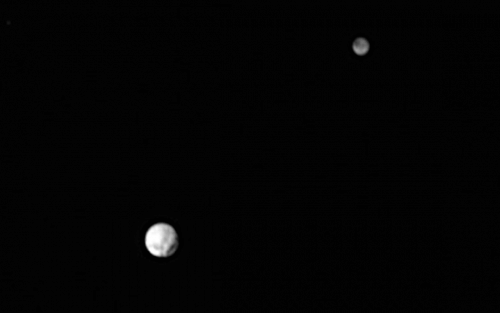All New Horizons devices are in good condition and work by the book. All the systems have passed the approval, the mission team is very busy planning and simultaneously checking the final instructions of the flight, examining the transmitted data, checking the navigation system and calculating the point of approach near Pluto, and they are also trying to locate signs of danger to the spacecraft in the Pluto system, but so far None were found.

The New Horizons spacecraft is approaching the flyby of the Pluto system and its large moon Charon. This is a unique opportunity in Mona to get to know Pluto, which even more than 70 years after it was discovered still contains many mysteries.
All New Horizons devices are in good condition and work by the book. All the systems have passed the approval, the mission team is very busy planning and simultaneously checking the final instructions of the flight, examining the transmitted data, checking the navigation system and calculating the point of approach near Pluto, and they are also trying to locate signs of danger to the spacecraft in the Pluto system, but so far None were found.
On June 14, the spacecraft was successfully maneuvered and today (July 1) another small correction is expected to reach the closest possible point to Pluto on July 14.
New Horizons is now moving at a speed of 49,600 km/h. A quarter of a century of preparations, lobbying, planning, building, launching and finally an extremely fast flight. Scientists have decades of data analysis ahead of them.
New Horizons is not the first mission to Pluto that was proposed before it, there were programs that have since been forgotten - Pluto Mariner Mark 2, PLUTO FAST FLYBY and - Pluto Kuiper Explorer. This is what Dwayne Day reveals on the website The space review
The ideas that did not come to fruition
"In the mid-XNUMXs, a proposal was made called the "Pluto/Charon Orbiter With Dual Landers." . At that time, a company called Science Applications International Corporation (SAIC, which changed its name to Leidos)) had a contract with NASA to build spacecraft for planetary missions. SAIC's contract allowed it to participate in the construction of missions that were previously built by JPL and were declared high priority - orbits to the planet Mercury, a spacecraft that will bring soil samples from Venus, and more. Several of the missions studied were built or at least supported by the Planetary Science Committee. such as a spacecraft to meet a near-Earth asteroid, Cassini, Galileo and Mars Observer. Other proposals such as a spacecraft to Saturn's moons and a spacecraft to meet or pass by Neptune did not receive support."
"One of the missions studied by SAIC was a dashpot with two landers - to Pluto and Charon. SAIC's report devoted only ten pages to a Pluto mission that would investigate the existence of an atmosphere, surface configuration and composition, and how Pluto interacts with the interplanetary medium. The report identified several ambitious goals for the Makfat mission, including exploring the surface of Pluto and Charon through crash landings of small spacecraft."
"SAIC's proposal for a spacecraft that would attack Pluto was not planned as engineers faced with the issue would plan today. Its construction and launch were very expensive. But it is possible that after Operation New Horizons people will ask what is the next step for the study of the outer solar system."

3 תגובות
Excellent, I'll take a carrot with me and I think sugar too
The last time I tasted gefiletti fish it was sweet 🙂
A. From the Ministry of Space Tourism
I have the impression that you are interested in opening a line of American Arlanais to the nitrogen oceans of Pluto. You will probably find Filata Fish there
I am intrigued to know what this mission will reveal to us.